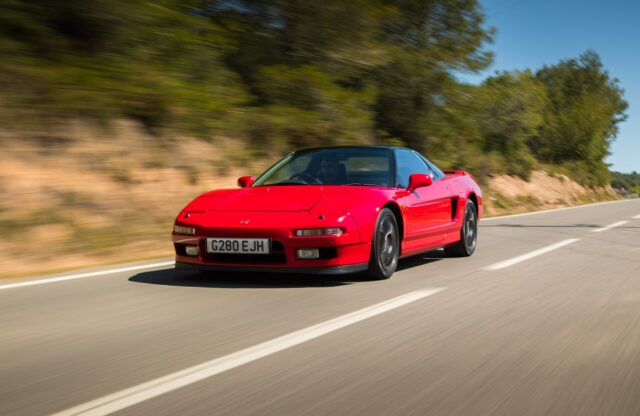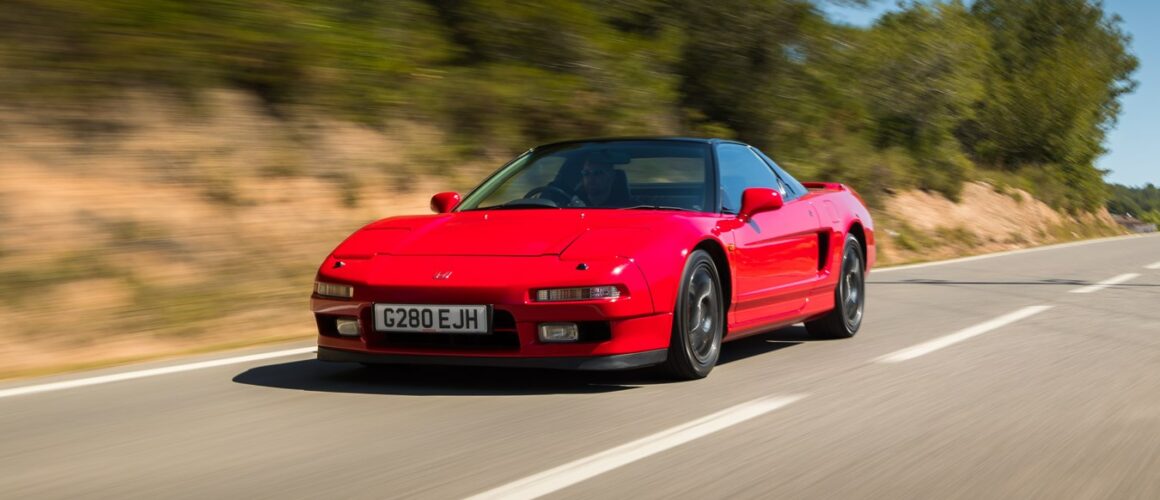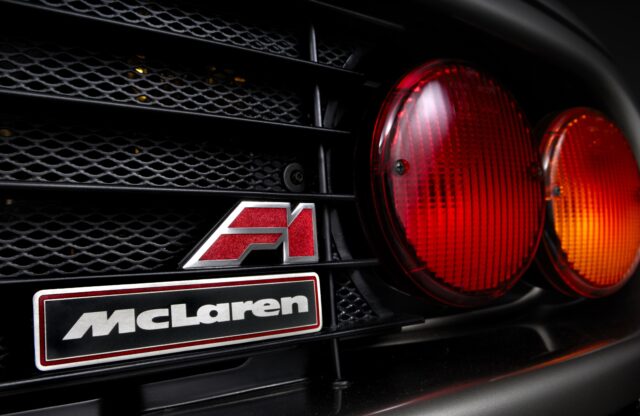WORDS: JOHN SIMISTER | PHOTOS: HONDA, WIKIMEDIA COMMONS
“Hey, I like your Ferrari!” That’s an appreciation commonly heard by owners of the type of car you see here – especially when it’s a red one, as they often are. Yet it’s a model made not by an Italian supercar specialist with a huge top-level racing history, but by a manufacturer of humble but clever hatchbacks and, nowadays, popular SUVs – which also has a pretty good top-level motor sport history, especially with engines.
It’s the Honda NSX, of course; a car of many firsts and with no economically sound reason to exist. Instead, as with Volkswagen’s misunderstood Phaeton but with considerable extra excitement, its maker made it because its maker could. The idea was for a supercar with the drama and ability of a Ferrari combined with a Civic’s ease of use and a big-manufacturer level of consistency in quality, accuracy and durability. And, of course, it would be the ultimate showcase of Honda’s capability.
Pursued not by the brand’s main design and engineering operation but by its R&D offshoot, the NSX took shape during the late 1980s as a mid-engined, two-seater coupé whose transverse V6 had its ’box not half-underneath, as in Ferrari’s smaller creations, but on the end as in Honda’s mainstream cars. The structure was the world’s first volume(ish)-production pressed-aluminium unibody to complement the aluminium powerplant (with titanium conrods) and forged-aluminium suspension parts.
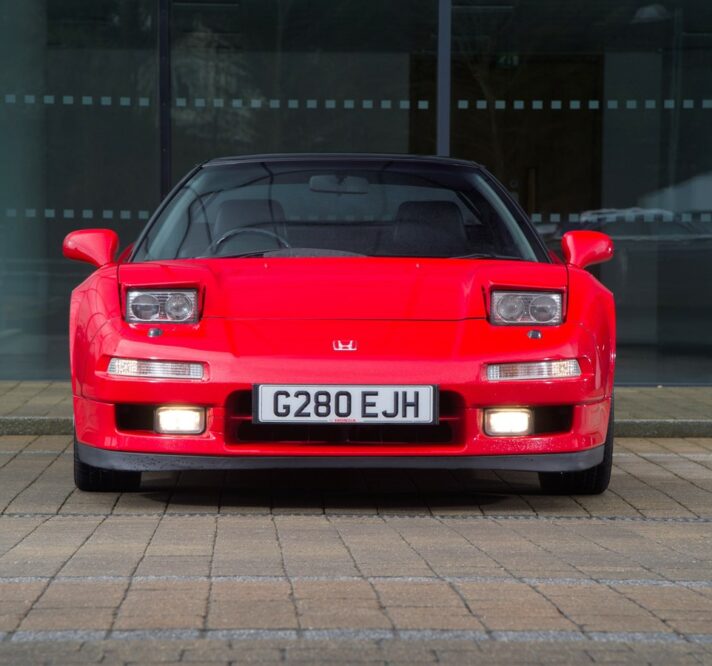
Just over three decades ago, to sit in a new NSX seemed almost otherwordly


Other firsts? The drive-by-wire throttle was one, the full electronic control of the air-con was another, the remote actuation thus allowing the unit itself to be placed low in the nose instead of being a bulky presence behind the dashboard. This in turn helped fulfil the brief for an unusually low scuttle and dash, and consequently a panoramic view forward. The view out to the sides and aft was also unusually clear for a supercar; that user-friendliness again.
The NSX (New Sportscar Experimental) was unveiled at the 1989 Chicago Auto Show and launched in 1990, after a painful gestation. That included deciding, after several prototypes including that show car had been built, to change from the originally planned 2.7-litre V6 with a single overhead camshaft per bank to a new 3.0 one able to incorporate twin camshafts and, vitally for this technological showpiece, Honda’s VTEC variable camshaft timing and lift. The new engine was wider, which meant lengthening the structure with all the attendant knock-on effects, but the 274bhp it produced at 7300rpm was reward enough.
Despite all that aluminium, though, the NSX proved anything but light at c.1400kg. Nevertheless Gordon Murray, evangelical about lightness, was quick to credit the NSX as validation for elements of his McLaren F1 – a car whose development began before the Honda’s was finished. That low nose, deep glass and nose-mounted air-con was one example. The usability, including easy access even for tall people, was another. A supple ride, helped by surprisingly small, light wheels wearing tyres with compliant sidewalls, was a third.
But did, and does, the NSX’s very usability make it less of a mystical supercar and just more of, well, a Honda? In 15 years of production, from 1990 to 2005, 18,685 NSXs were built, so it wasn’t a total sales disaster. Of those, 8997 went to the US, where they were badged Acura NSX, but just 1559 came to Europe, the Middle East and Africa. Graham Horgan from long-established UK NSX specialist Plans Performance – we will be hearing more from him – estimates total British imports (not counting the entirely new NSX launched in 2016) to have been around 500 cars, including somewhere between 50 and 80 Japanese-spec grey imports. The latter’s rarity in the UK is simply because NSXs are still very highly prized in their home market.
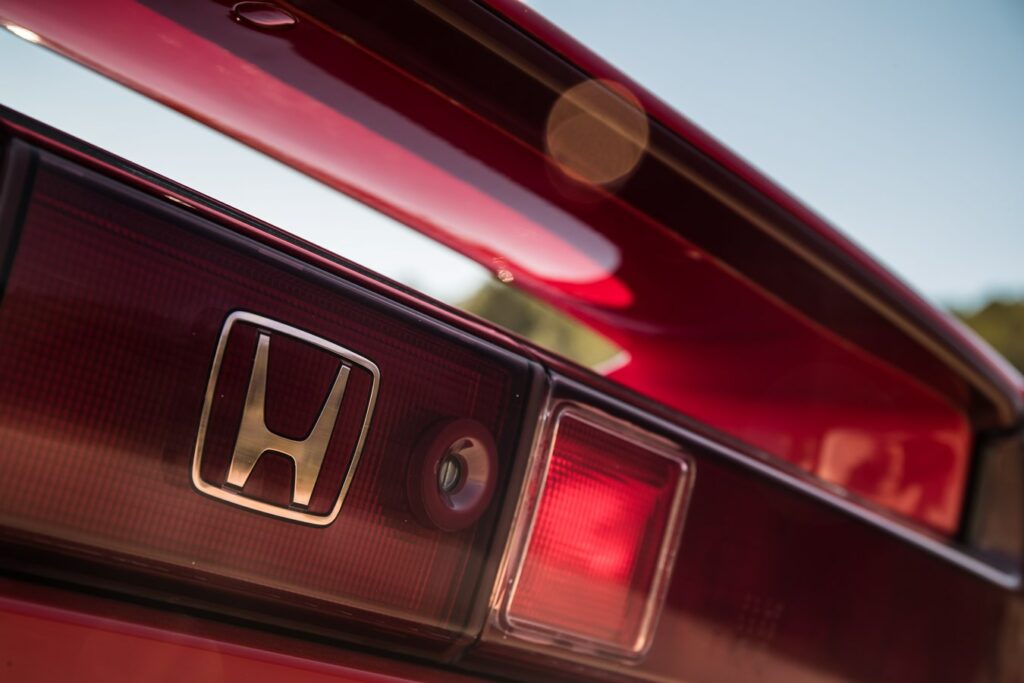
THE VALUE PROPOSITION
If potential buyers couldn’t quite commit to an NSX when it was new, given the obvious counter-attraction of a safe-bet Porsche 911 as well Lotus’s familiar Esprit and Ferrari’s glamorous 348/355/360/430 models, they might have wished for a crystal ball. Had you bought an NSX a dozen years ago, your value proposition would have been extremely good because, reckons Horgan, values have since tripled.
Cars rated as ‘excellent’ by Hagerty now comfortably exceed the numeric figure of their cost new, if not necessarily that amount’s buying power, while the very best examples aren’t far off a six-figure value. Or, for the rare, ultra-desirable and grey-import-only R models, some way past it. Some NSXs, though, are more sought-after than others. Two attributes in particular knock the value back: an auto ’box (just four gears, a torque converter and a drop in power to 255bhp, to suit a transmission engineered for the engine originally intended), and a targa top instead of a solid roof (available from 1995, extra 40kg, less purity). And there are two engine sizes to consider, as well as the 2002 facelift which, among other things, replaced the pop-up headlights with fixed units to meet new safety regulations that frowned on frontal projections.
In the beginning was the 3.0-litre coupé with a black roof; Hagerty reckons £40,100 for a sad one, over £50k for a decent one and £100k- plus for the very best. A NSX-T targa, however, upon the launch of which all NSX roofs matched the main body colour, could span £35k–£88k. A year before the NSX-T’s launch, Honda compromised its principles and added an inch of diameter to the wheels, originally 15in front, 16in rear, and gave the manual car the power steering always fitted to the automatic.
In 1997 there came, for the manuals only, a 3mm increase in cylinder bore to take the capacity from 2977cc to 3179cc, teamed with a new six-ratio ’box (instead of five-speed) and an electric power-steering system. Power was unchanged, but additional torque reached its peak at a gentler crankshaft speed: 224lb ft at 5300rpm instead of 210lb ft at a very racy 6500rpm. These 3.2-litre NSXs, known as NA2 instead of the earlier cars’ NA1 designation, are significantly more valuable today. Hagerty records a £40,100 value for a ‘fair’ coupé (NSX-T £35,100), £56,600 for a ‘good’ one (£46,100), £72,600 if in ‘excellent’ order (£64,100) and £110,000 for the very best (£88,100).
The 2002 facelift brought 17in wheels all round as well as the loss of the pop-ups, further shifting the NSX from its original concept, but Hagerty notes no obvious change in average values relative to the earlier 3.2-litre cars. That covers the NSX models officially offered in the UK, but a single-minded driving enthusiast’s NSX dreams are likely to involve the remarkable Japan-only R models of which a very few have found their way to the UK.
The stripped-out, no-frills cars, always white with a black roof, weigh 140kg less than a regular NSX and have major suspension alterations. These include stiffer dampers matched to stiffer front springs but softer rear ones, a stiffer front anti- roll bar and revised rear lower wishbones to alter the geometry. The effects are remarkable, as this guide’s next section will explain. There are two R models: the 3.0-litre NSX-R of 1992, of which 483 were made, and 2002’s 3.2-litre NSX-R, which was replicated just 140 times. Horgan estimates that you will pay £250k-£300k for a really good 3.0, and £400k-£500k for an optimum 3.2. The problem lies in finding one.
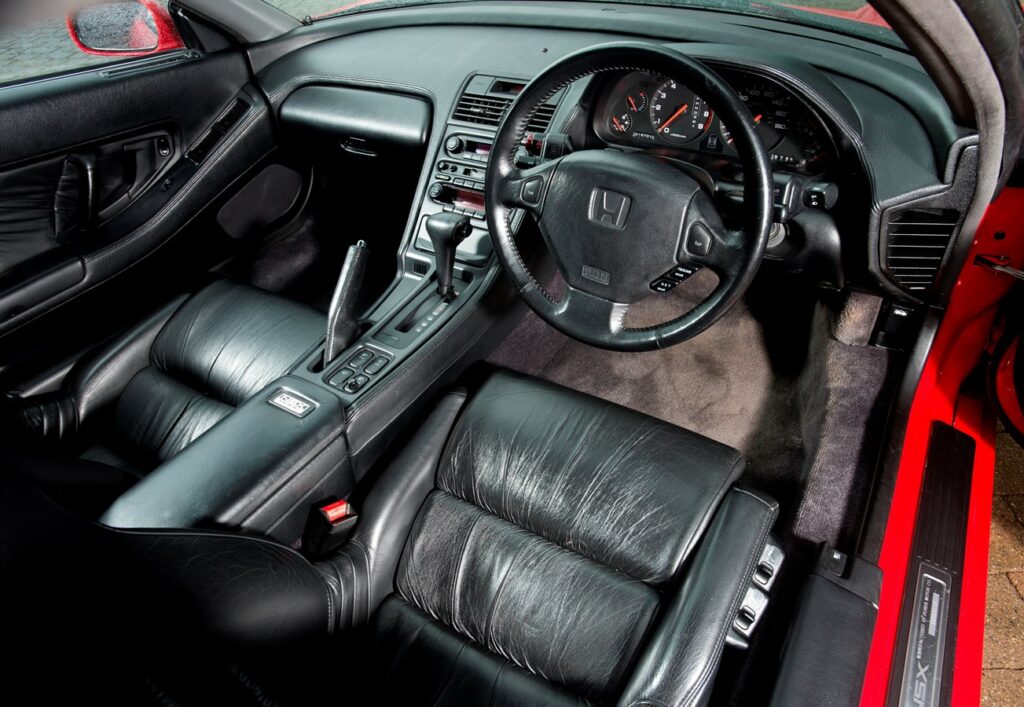
THE DESIRABILITY FACTOR
Just over three decades ago – seems unbelievable, but it’s true – to sit in a new NSX seemed almost unworldly. The view forward was very obviously that of a mid-engined supercar, but the visual detail in the cabin, the tactility, even the smell, were pure high-end Honda. The super-neat switchgear labelling, the ultra-crisp dials, the bespoke Bose sound system, the fit and the finish – all were of a production-engineered standard probably not next seen in a mid- engined supercar until Audi’s R8.
Rather than making the Honda seem less exotic, this actually instils a sense of calm, relief almost, in its driver. To drive an NSX proves to be not a battle but a simple joy. Everything works smoothly, predictably, properly. The engine yowls enthusiastically to 8000rpm, yowl turning to howl as the VTEC does its stuff, and although highly agile the NSX never feels nervous or darty. The opposite, actually; the steering, especially the early non-powered system, initially seems a bit slow around the centre, but it soon wins you over with its accuracy and feel, and of course the ride is remarkable compared with stiffly sprung modern cars’. A ‘compliance link’ between the front wishbones’ rearward pivots and the NSX’s structure, to ensure correct wheel alignment even as the suspension moves, plays a big part in this supple precision.
There is a sting in the tail, though – one that even the development feedback of Ayrton Senna didn’t eradicate. Should the tail begin to slide, be that through a panic lift-off in a bend or too much power too soon, it all gets a bit pendulous and hard to catch. Unless, that is, you’re in an NSX-R, whose tail is tied down more firmly and which reacts both more quickly and more progressively to your inputs. All NSXs should have been like this; that they were not just adds to the enigma of the breed’s whole existence.
Should you be drawn to the idea of an automatic (fitted with paddle-shifters from 1994), be aware that a chunk of what makes an NSX wonderful to drive is lost. Less power, fewer gears with which to keep the torque on the boil, blunted responses as you balance the forces in a bend: it all feels a bit flat.
Now, the way it looks. Japan meets Maranello, to a degree; functional rather than aggressive, with that neatly integrated rear spoiler hovering above a full-width strip of red light lens-work and a tail that, aesthetically, is a touch longer than ideally it should be. But what the NSX loses there in visual athleticism it makes up for by having a very useful boot. The bubble-curved rear window hinges up, too, to reveal the engine bay nestling under a cover. Black roof or body colour? The former seems more aeronautical, more daring, the latter is more go-with-the-fashion-flow. Pop-up headlights or not? Pop-ups are more fun and look more exotic; they and the accompanying subtler front air intake, split by a horizontal bar, give an NSX-specific visage rather than the more generic face of later variants.
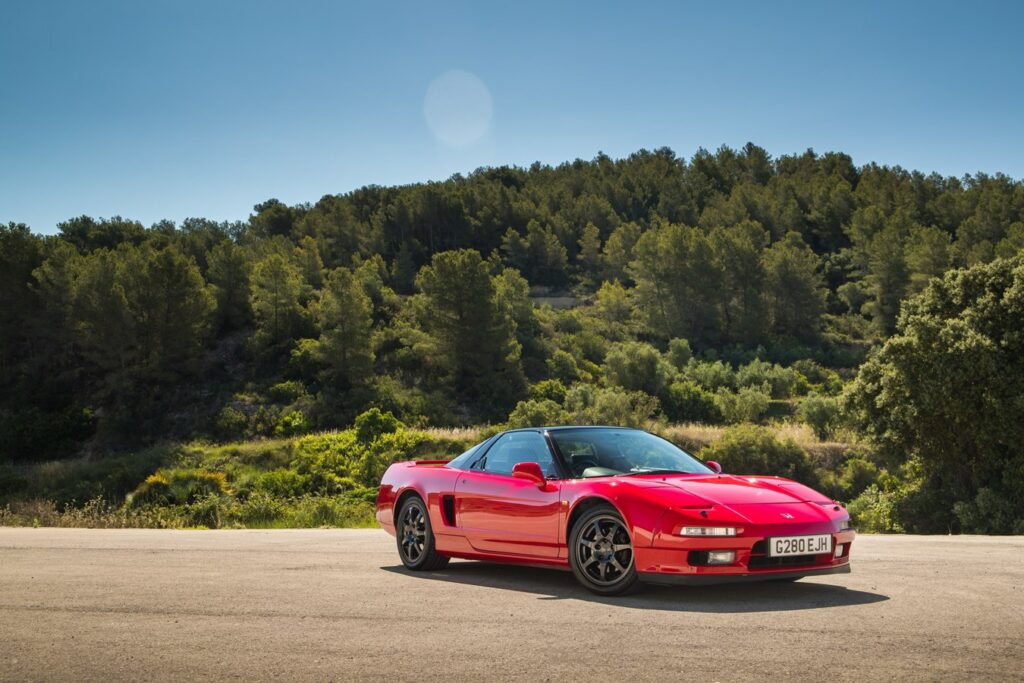
THE NUTS AND BOLTS
Many NSXs have covered a lot of miles, often well into six figures, because in typical Japanese-car fashion they can. They just need regular servicing; some examples will still bear a fine set of Honda main-dealer stamps, although attention by a specialist is more likely nowadays. Honda can still supply 95 percent of parts, but those that are NSX specific – which is most of them – can be very expensive. A front upright, which must be replaced in its entirety if the lower power steering, the circuit board for the air-con, and especially the Bose system.
But everything is repairable, and in the case of the stereo it’s possible to build modern internals into the original casing. Otherwise, the usual checks apply: alignment of body panels and tightness of panel gaps (they should all be ultra precise), no evidence of accident damage, a credible service history, no fluid leaks. The engine should run quietly from cold, and its note should harden as the revs rise, accompanied by a surge of power. If that doesn’t happen, then suspect a fault with either the VTEC system or the VVIS variable- geometry intake plumbing. Some early five-speed gearboxes numbered between J4A4-1003542 to J4A4-1005978 had a faulty snap ring for a countershaft bearing, which could cause major failure, so evidence that this has been addressed early on would be reassuring. That said, if the NSX in question has done many miles and its ’box is behaving, then there’s probably nothing to worry about.
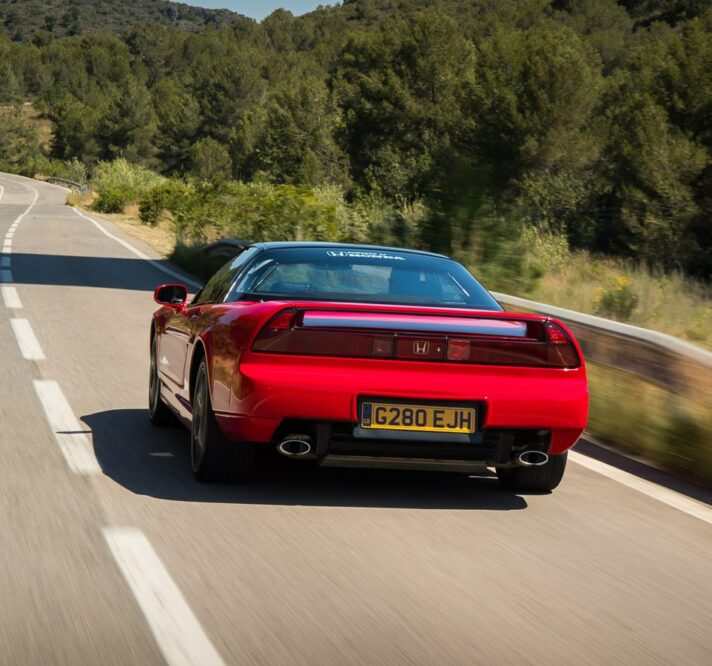
No other rapid mid-engined machine can be more painless to own than this one
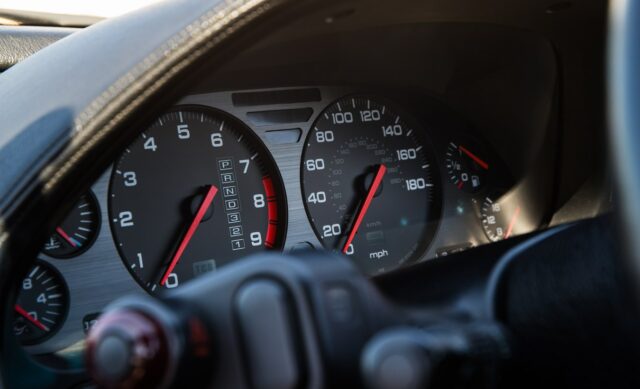
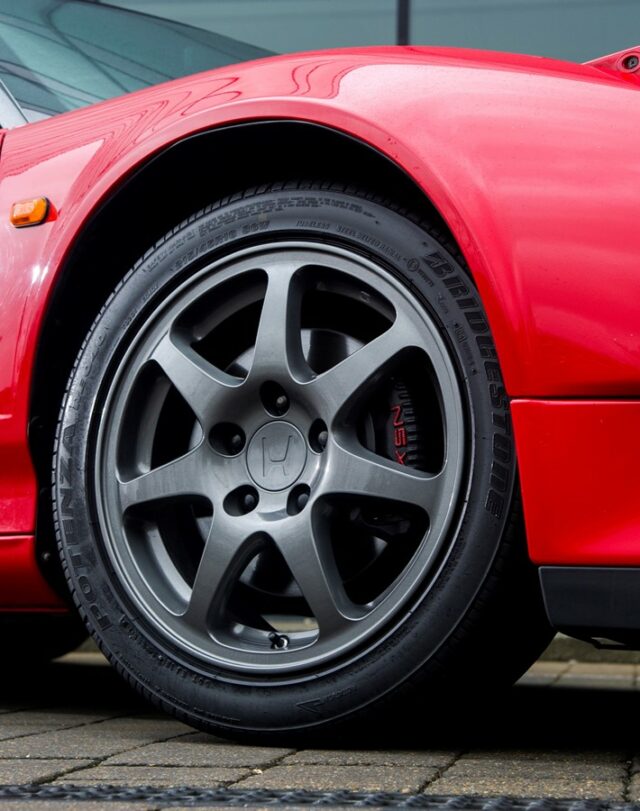
THE FINAL DECISION
Is the Honda NSX a ‘supercar’? Maybe, maybe not, but it hardly matters. More to the point is that no rapid mid-engined machine with an inspiring exhaust note and exotic looks can be more painless to own than this one, while simultaneously offering such thrills. And a further point: given that painlessness, you’ll use it all the more. The trouble-free high mileage of many examples balljoint has worn, is well into four figures, for example, although Graham Horgan points out that spares sourced from the US can be a lot cheaper than UK dealer prices: “If Honda can’t supply a part, there are other sources. There are no huge show-stoppers.”
The aluminium structure has held up well over the years, but Horgan has detected a recent shift in the NSX work carried out at Plans Performance: “Increasingly we’re doing restoration work as people realise their cars’ value,” he says. “We will be blasting and anodising components, fixing any bits of body corrosion, and putting modified cars back to standard. “We used to do upgrades including a conversion to the Type R suspension spec, which we still offer. But people want the cars back to standard nowadays and a factory-spec model is worth more.”
Horgan has found that NSXs are very reliable: “The few issues that they’ve had over the years have become exacerbated as they get older, though. The electronics can be an issue; the ABS, the electric is proof positive of that. The NSX also represents a very Japanese manifestation of bold concept, technical innovation, corporate pride and precise, exquisite detail. It’s a statement designed to endure – and three decades on, it is certainly doing that.
So, which NSX? One of the NSX-Rs would be the biggest, most hardcore thrill, all stripped out with no troublesome Bose stereo to worry about. But they’re expensive and extremely rare, and their enthusiastic owners in Japan won’t want to part with them. Of the others, an automatic misses the point, while an NSX-T offers the joy of open air at a slight cost in pace and dynamic precision.
Market forces say a 3.2 is more desirable, and certainly it is a punchier drive than the keep-on-revving 3.0, but the smart thing to do might be to take advantage of the 3.0’s current lower value and find an example of the earliest, purest version. The image of that, after all, is what flashes into most people’s minds if you mention those three letters: NSX.
Thanks to Graham Horgan at Plans Performance, Dunsfold, Surrey, UK. Visit www.plansperformance.com or call +44 (0)1483 898888.

THE DETAILS:
1990-2005 HONDA/ACURA NSX
ENGINE: Transverse 90-degree V6, 2977cc (later 3179cc)
POWER: 274bhp
TOP SPEED: 170mph
0-60MPH: 5.7 seconds
